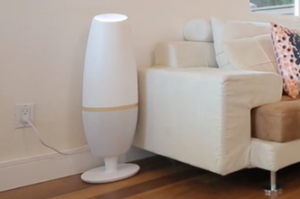Share This
Related Posts
Tags
Orison
By Anca Gagiuc on Jun 10, 2016 in Technology
Institutions and regular citizens ar e transitioning from a fossil-fueled past to a cleaner energy future. The cost of installation for such systems has dropped considerably in recent years, making them more affordable for general use.
e transitioning from a fossil-fueled past to a cleaner energy future. The cost of installation for such systems has dropped considerably in recent years, making them more affordable for general use.
Currently, one of the biggest wrinkles in this still young industry is storage. A study by EuPD Research shows that just 34 percent of photovoltaic installers in the U.S. offer storage solutions to customers. The company’s latest PV Installer Survey revealed that current pricing of batteries impedes demand, meaning margins are too low for installers and the “technological maturity” of the systems on the market is not currently convincing. But things are gradually changing—26 percent of survey participants say they are working on adding storage products sometime this year.
However, across all sectors there is a growing trend for more storage globally—IHS forecasts as much as 900 MW of storage projects will come online in 2016, meaning a doubling of the current cumulative installed storage capacity globally. GTM found that in the U.S., the storage market more than tripled in 2015, growing 241 percent for the year, spurred by pro-storage policies in many solar states, as well as incremental price decreases for leading battery technologies like lithium-ion.
The leader in the field is Tesla’s Powerwall; the product scored top marks for “unaided brand awareness” in the EuPD Research survey, as installers discovered they had very little marketing to do to consumers. Another very popular battery brand is Trojan (solar & storage installations), but we want to talk about the new Orison home battery, the product of a San Diego-based startup.
Launched on Kickstarter this year, Orison is going up against the biggest names in energy storage, an emerging area of technology of great importance. Orison’s stylish new product has a legitimate chance of altering the way many consumers and businesses interact with the electrical grid. Their idea might influence greatly the next wave of technology innovation.
The startup’s signature product is a home battery system that plugs directly into a wall outlet, thus requiring no special skills or equipment to install. It’ss also small enough that it can be shipped by FedEx. Just like the Powerwall, Orison charges by drawing energy from solar panels or from the utility grid when rates are low. Also, just like Tesla’s battery, it provides excess power that can be used to run the home during power outages or at times when utility grid costs are peaking.
What really differentiates Orison from Powerwall is installation—Orison comes in the form of a plug-in unit that looks like a lamp and a flat wall panel that weighs (each) under 40 pounds. All it needs to function is to plug the lamp-like unit into an outlet and hang the wall panel, that’s all. The units will communicate via the internet, thus no wiring is necessary. Moreover, the company offers a 10-year/5,000 recharge-cycle warranty.
Tesla’s 200-pound Powerwall needs to be installed by a trained electrician. And requires an inverter that doesn’t come with the Powerwall.
Each of the two versions comes with special features that make the devices more functional: the Orison Panel has customizable LED back lighting, while the Orison Tower features an integrated Bluetooth speaker and has 1.5W USB ports dedicated to charge gadgets. Both versions pack in 2.2 kWh with a constant flow of 1.8 kWh and a peak of 3.5 kWh. This means they can power a laptop, AC unit and a TV for six hours, or a refrigerator for 24 hours a day. To give you an idea what that really means, the average person in the U.S. uses about 30 kWh per day.
Once the unit has stored up energy, the customer can decide when and how to use it. It’s obvious that one unit doesn’t store enough power for the entire home. The Panel/Tower will be able to power just one circuit, but multiple units can take care of all the circuits in a residence, tough this move might get costly pretty quick. For this reason, Orison offers a handy calculator that’s supposed to estimate potential energy savings over time, as well as how many Panels or Towers are needed to tackle energy storage for the entire home.
The Orison batteries are cheaper than the Powerwall, but they’re not cheap. The wall-mounted version will retail for $1,600 and the tower version will retail for $1,950. We’ll know more once they arrive this summer.
